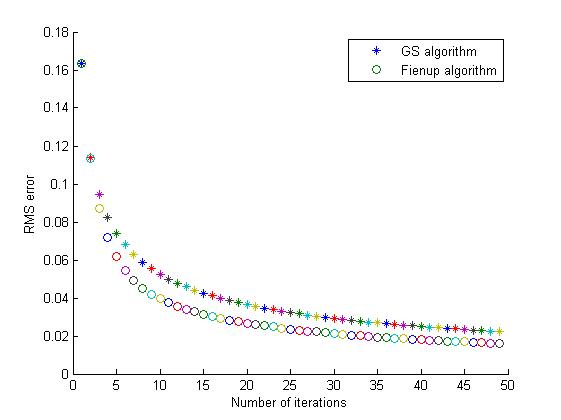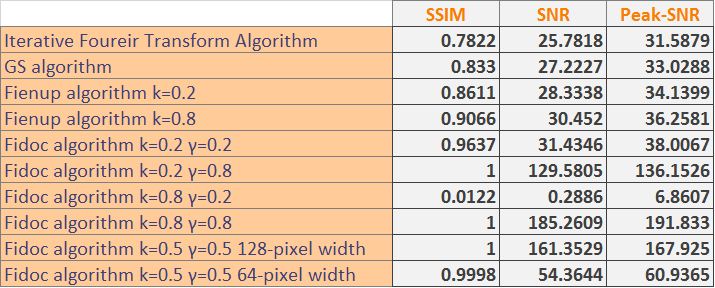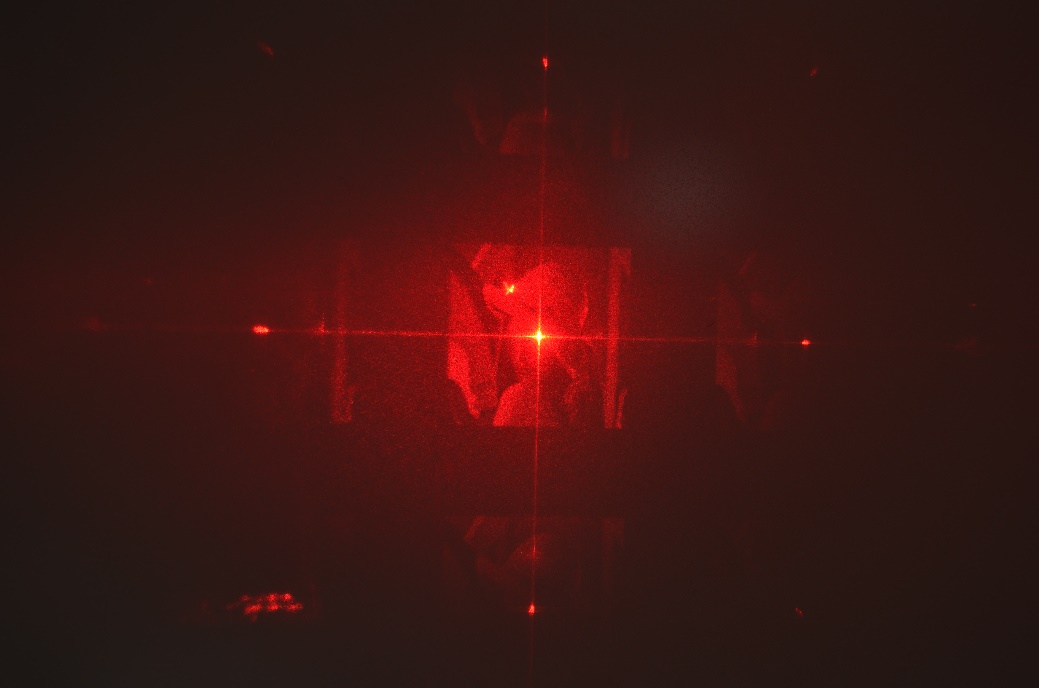Spatial Light Modulators and its Application in Computer Generated Holograms – Mr Xin Chang
The project aims to lay a foundation of knowledge regarding computer generated hologram (CGH) and potential improvement to upgrade the quality of the reconstructed image. The most significant part of this project is the algorithm to compute the hologram with a satisfactory image quality and computation speed. Various algorithms were examined including the Gerchberg–Saxton algorithm, the Fienup algorithm and the Fidoc algorithm.
The GS algorithm is essentially an iterative method, which is capable of converging the error between the target image and the reconstructed image. Weight is introduced into the calculation in the Fienup algorithm which makes the convergence faster. Further improvement is also achieved with the Fidoc algorithm by implementing a ‘don’t care’ area, where the generated noise is disposed.
In order to compare these algorithms, several criteria are also used such as the amplitude of the reconstructed image and the rate of convergence. In the end, an optical system was setup with the help of Dr Zhengxi Chen, to implement the reconstruction process. The hologram is loaded upon a LCOS device and the image is printed on a diffuser. In order to assess the image quality directly, other criteria are employed such as the structural similarity (SSIM) index and signal to noise ratio (SNR). Further improvement is pointed out in the end such as using a filter to eliminate the DC term. This project is a good combination of theoretical study, simulation and practical experiment and it is of great importance to further study in this field.
Xin is located at the University of Cambridge and his PhD is supervised by Prof Daping Chu at the Centre for Advanced Photonics and Electronics.
Outputs
Posters
Chang, X., Li. K., Xu, H. and Chu, D. (2016). The fabrication of 12″ liquid crystal on silicon devices, Poster presentation to the EPSRC Centre for Innovative Manufacturing in Ultra Precision Steering Meeting Committee, 24 February 2016, Cranfield University, UK.








